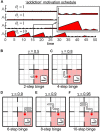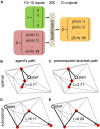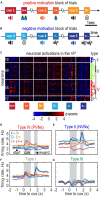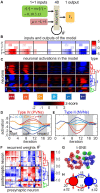Neural Networks With Motivation
- PMID: 33536879
- PMCID: PMC7848953
- DOI: 10.3389/fnsys.2020.609316
Neural Networks With Motivation
Abstract
Animals rely on internal motivational states to make decisions. The role of motivational salience in decision making is in early stages of mathematical understanding. Here, we propose a reinforcement learning framework that relies on neural networks to learn optimal ongoing behavior for dynamically changing motivation values. First, we show that neural networks implementing Q-learning with motivational salience can navigate in environment with dynamic rewards without adjustments in synaptic strengths when the needs of an agent shift. In this setting, our networks may display elements of addictive behaviors. Second, we use a similar framework in hierarchical manager-agent system to implement a reinforcement learning algorithm with motivation that both infers motivational states and behaves. Finally, we show that, when trained in the Pavlovian conditioning setting, the responses of the neurons in our model resemble previously published neuronal recordings in the ventral pallidum, a basal ganglia structure involved in motivated behaviors. We conclude that motivation allows Q-learning networks to quickly adapt their behavior to conditions when expected reward is modulated by agent's dynamic needs. Our approach addresses the algorithmic rationale of motivation and makes a step toward better interpretability of behavioral data via inference of motivational dynamics in the brain.
Keywords: addiction; artificial intelligence; hierarchical reinforcement learning; machine learning; motivational salience; reinforcement learning.
Copyright © 2021 Shuvaev, Tran, Stephenson-Jones, Li and Koulakov.
Conflict of interest statement
The authors declare that the research was conducted in the absence of any commercial or financial relationships that could be construed as a potential conflict of interest.
Figures








References
-
- Andrychowicz M., Wolski F., Ray A., Schneider J., Fong R., Welinder P., et al. (2017). Hindsight experience replay. Adv. Neural Inform. Process. Syst. 30 5048–5058.
-
- Bacon P. L., Precup D. (2018). Constructing temporal abstractions autonomously in reinforcement learning. Ai Magaz. 39 39–50. 10.1609/aimag.v39i1.2780 - DOI
Grants and funding
LinkOut - more resources
Full Text Sources
Other Literature Sources

